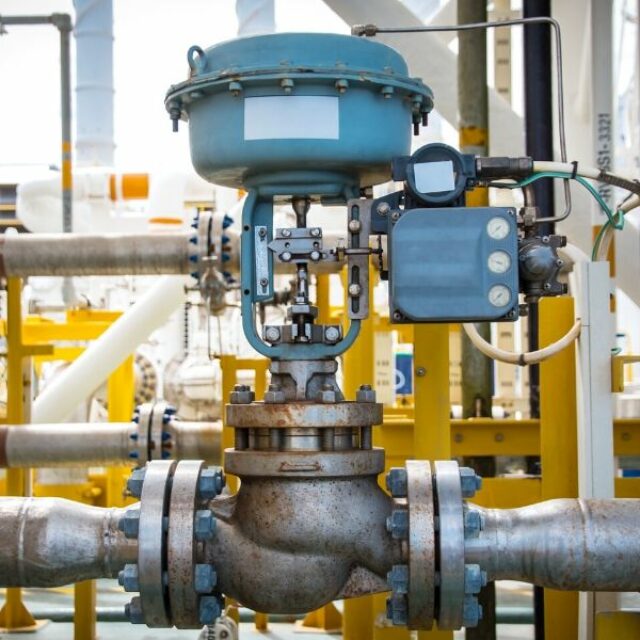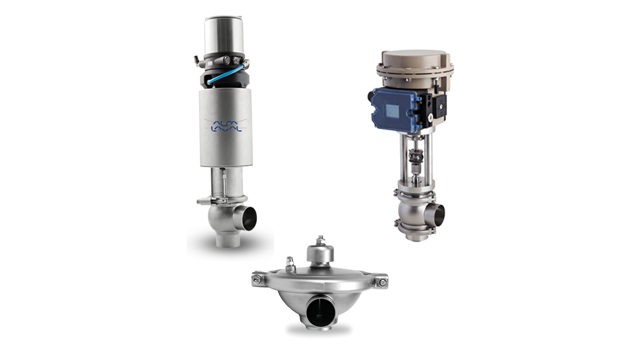The Duty of Control Valves in Fluid Circulation Management Equipment
The Duty of Control Valves in Fluid Circulation Management Equipment
Blog Article

Maximize Energy Cost Savings and Comfort With Advanced Building Automation Controls
In the realm of modern-day style and facility management, the integration of advanced structure automation manages stands as an essential improvement. The merging of innovation and sustainability has birthed a brand-new period where power performance, convenience optimization, and operational streamlining are no longer remote desires but achievable realities. By harnessing the power of automation, structures can adapt, react, and develop in manner ins which were as soon as unbelievable. The potential for considerable energy cost savings and boosted comfort is not simply a possibility yet a pledge waiting to be satisfied. This standard shift in building monitoring holds the essential to opening a world where ecological conscientiousness and passenger well-being sympathetically exist side-by-side within the walls of our structures.
Energy Performance Advantages
Energy performance benefits can substantially lower energy consumption and operational prices in structures. By executing energy-efficient methods and innovations, structure proprietors and operators can achieve substantial cost savings while likewise adding to ecological sustainability. Among the key benefits of boosting power performance in structures is the decrease of utility expenses. Energy-efficient systems, such as advanced building automation controls, can optimize using resources like illumination, heating, and cooling, bring about reduced energy expenses gradually.
In addition, enhanced power effectiveness can lengthen the life-span of structure devices and systems. By operating extra successfully, cooling and heating systems, light, and various other structure components experience much less damage, causing lowered upkeep and substitute prices. Furthermore, energy-efficient structures often regulate higher residential or commercial property worths and rental prices, supplying lasting financial advantages to proprietors.
Moreover, energy effectiveness can enhance passenger convenience and productivity. Effectively managed indoor environments with optimum lighting and thermal conditions develop a more helpful and enjoyable work area, causing enhanced staff member satisfaction and efficiency. On the whole, the energy performance benefits connected with sophisticated building automation controls are multifaceted, including expense financial savings, ecological stewardship, and resident well-being.
Boosted Comfort Control
Enhancing comfort control in building settings requires a sophisticated combination of advanced automation systems for optimum occupant well-being. By using sophisticated structure automation controls, facilities can tailor the indoor atmosphere to fulfill the particular requirements and choices of residents. control valves.
Enhanced convenience control exceeds basic temperature modifications. It consists of attributes such as individualized settings, tenancy sensors, and natural light usage to create a dynamic and responsive atmosphere. By including these sophisticated controls, buildings can not just boost comfort but also improve energy efficiency by enhancing system operations based upon real occupancy and usage patterns. Inevitably, prioritizing passenger comfort via sophisticated automation systems causes a much more pleasurable and much healthier interior setting.
Functional Effectiveness Improvements

In addition, the implementation of real-time surveillance and analytics tools makes it possible for building drivers to recognize energy inadequacies and functional anomalies without delay. By continually keeping track of energy use patterns and system efficiency metrics, adjustments can be made in real-time to enhance energy consumption and make certain peak operational performance. control valves. Additionally, integrating demand response approaches right into building automation controls can even more improve operational effectiveness by dynamically readjusting power usage based on grid problems and pricing signals
Indoor Climate Optimization
Efficient indoor environment optimization is a basic aspect of structure automation controls, making certain owners' convenience and wellness while see optimizing power cost savings. By making use of advanced sensors and controls, developing automation systems can constantly keep an eye on and adjust temperature, moisture levels, try these out air high quality, and air flow to create an ideal interior atmosphere. Preserving comfy and consistent conditions not just improves passenger satisfaction but likewise boosts efficiency and total well-being.
Indoor climate optimization likewise plays an essential role in power performance. By fine-tuning home heating, ventilation, and cooling systems based upon real-time information and tenancy patterns, constructing automation controls can considerably minimize power usage - control valves. For example, applying approaches such as demand-controlled ventilation and thermal zoning can assist reduce power waste while ensuring that each area of the building receives the required conditioning.

Sustainable Setting Production
Building automation regulates not just optimize interior climate problems for energy efficiency and owner comfort yet likewise lay the foundation for developing a sustainable environment through critical administration of resources and systems. By integrating innovative building automation technologies, such as sensing units, actuators, and smart software, centers can readjust and check power usage in real-time to decrease waste and decrease their carbon impact. These systems make it possible for anticipating upkeep, determining prospective problems before they rise and optimizing tools efficiency to enhance long life and effectiveness.
Moreover, lasting environment production expands past energy management to encompass water preservation, waste reduction, and interior air top quality renovation. Structure automation controls can manage water use, find leaks, and make Visit Website sure proper garbage disposal methods, adding to total sustainability initiatives. In addition, by regulating and checking air flow and purification systems, these technologies enhance occupant health and efficiency while reducing energy usage connected with a/c procedures.
Conclusion
Finally, progressed building automation manages offer considerable benefits in regards to energy savings, comfort control, functional effectiveness, indoor climate optimization, and developing a lasting atmosphere. By executing these controls, buildings can attain optimum performance while reducing power intake and enhancing owner comfort. It appears that using innovative automation modern technology is vital in enhancing building efficiency and creating an extra sustainable future.
Energy efficiency advantages can dramatically lower energy consumption and functional costs in structures. Generally, the energy performance benefits associated with innovative building automation controls are complex, including cost financial savings, environmental stewardship, and owner wellness.
Furthermore, including need response methods right into structure automation controls can additionally boost functional performance by dynamically readjusting power use based on grid problems and rates signals.
Structure automation regulates not just enhance interior environment problems for energy performance and occupant comfort but also lay the foundation for creating a lasting setting with critical monitoring of systems and sources.In conclusion, advanced structure automation controls offer substantial advantages in terms of energy savings, comfort control, functional effectiveness, indoor environment optimization, and developing a lasting atmosphere.
Report this page